
Delaware River watershed comes alive at Philly museum
Exhibits at the Academy of Natural Sciences of Drexel University offer immersive lessons
| September 28, 2022
Note: This is the second part of a two-part series about exhibits at Philadelphia museums that focus on the Delaware River watershed, water quality and how to keep our rivers healthy and thriving.
Exhibits at the Academy of Natural Sciences of Drexel University now on display are a wonderland for water nerds.
Not an environmental educator or someone deeply versed in the makeup of the Delaware River and its watershed?
No problem.
The exhibits, which are collectively promoted as “Watershed Moment,” are accessible, informative and, at times, poetic in the ways they celebrate nature. Visitors cannot help but come away from the installations with a deeper appreciation and understanding of the way water works and our relationship to it.
Here’s a glimpse of what the academy has to offer:

How to Get to the River
This 1.5-mile walk is an experience for the senses. Organized a bit like a treasure hunt, the route is posted with yellow markings to signal the path you should follow, ultimately leading you to the Schuylkill River Trail.

“The experience will initiate an intimate conversation with the watershed as it informs our landscape, traverses our neighborhoods and underpins our lives,” reads an exhibit description.
Though you are walking in an urban landscape, the installation is an immersive sensory experience that highlights how human development has affected water and how water has affected human development.
Blue footprints denote places for you to stand and appreciate how high – and far – the water got during flooding caused by Hurricane Ida last year. Some of the markings are astonishing and force you to take in the fury of nature and the havoc it can cause on our streets, buildings and stormwater systems.
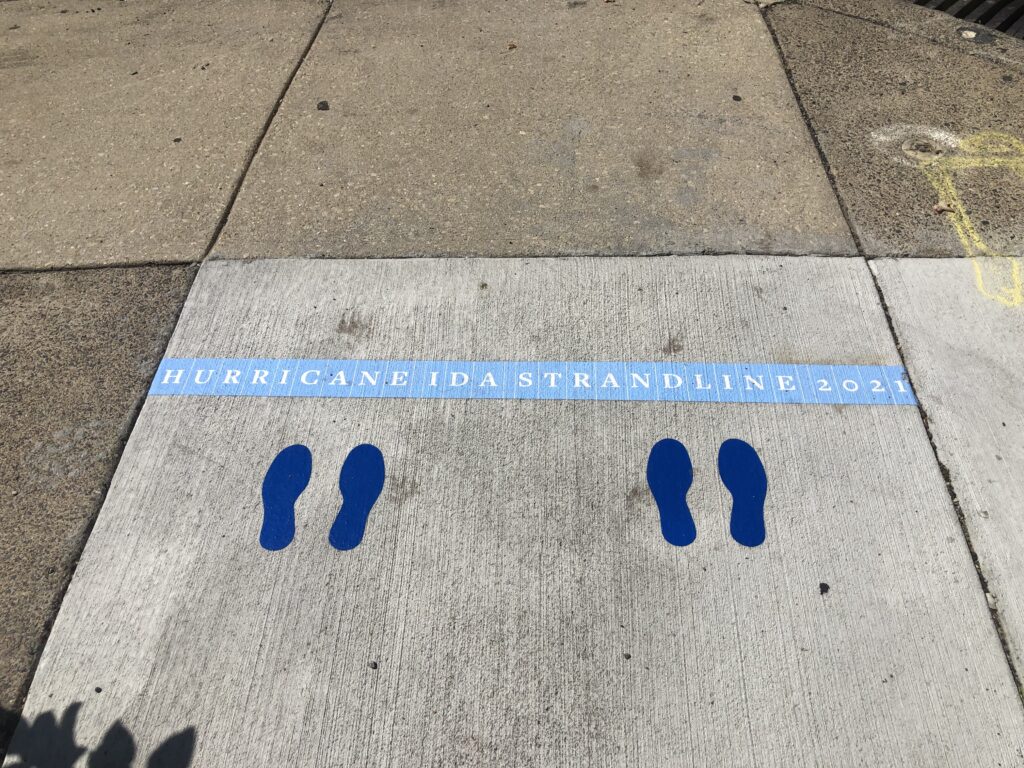

During the walk, you also gain insights into the maze of underground pipes, utility lines, and water and sewer systems that crisscross beneath our feet. A color-coded guide that matches markings on the pavement hints at the network that provides us with electric, phone, sewer, water and cable services out of our sight

Sets of metal rings are mounted on stands and, when you peer through the outer ring and look through a smaller one, your attention is focused on water-related infrastructure. Depending on where you are standing, your eye is drawn to a fire hydrant, a stormwater grate or a rain gutter
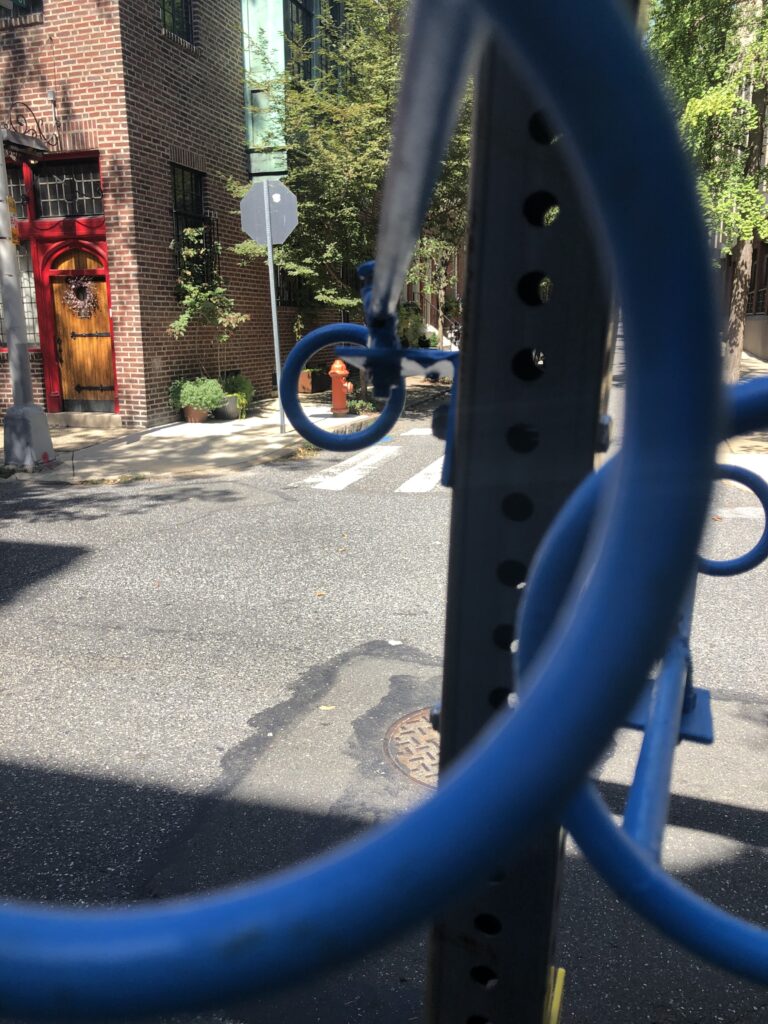
Other stops along the way bring you to tube-shaped speakers (they almost look like ship horns) that play music or sounds that imitate water. Cards issued by the academy for the walk have a code that activates the speakers.

Dotted along the sidewalks during the journey to the Schuylkill are signs that express through poetry and prose the relationship we have with rivers. One sign describes flooding this way: “In a flood, the water comes back, sometimes to the memory of where a river has been before.”

New Paradise Laboratories, which produced the “How to Get to the River” installation, describes the project’s origins this way: “HTGTTR was born out of just such a conspiratorial art-science practice. In order for the broader public to feel invited and connected to the watershed science undertaken at the Patrick Center for Environmental Science (part of the broader Academy of Natural Sciences at Drexel University), our creative team determined it was necessary that the public fundamentally appreciate, experience, and come to love the way water moves through our urban ecology.”
Marina McDougall, the academy’s vice president of experience and engagement, said the extensive outdoor installation was ground-breaking for the institution. Collectively, the exhibit involved up to 40 different pieces, the installation of which involved working with the city’s Art Commission, Parks and Recreation, the Schuylkill River Trail, neighborhood groups and individual neighbors.
From conception to completion, How to Get to the River took about three years, she said. Against the backdrop of the pandemic, organizers wanted to create something outdoors that encouraged “watershed thinking” and explored the built landscape and how it intersects with social and natural ecologies, McDougall said.
The fundamental goal was to figure out how to get people to understand how they live in the watershed. In the case of the academy’s neighborhood, it’s the Lower Schuylkill watershed. Artists and organizers deliberately avoided screen-based presentations and, using signs, artwork and markers, annotated the city’s streetscape, McDougall said.
Inside the Watershed
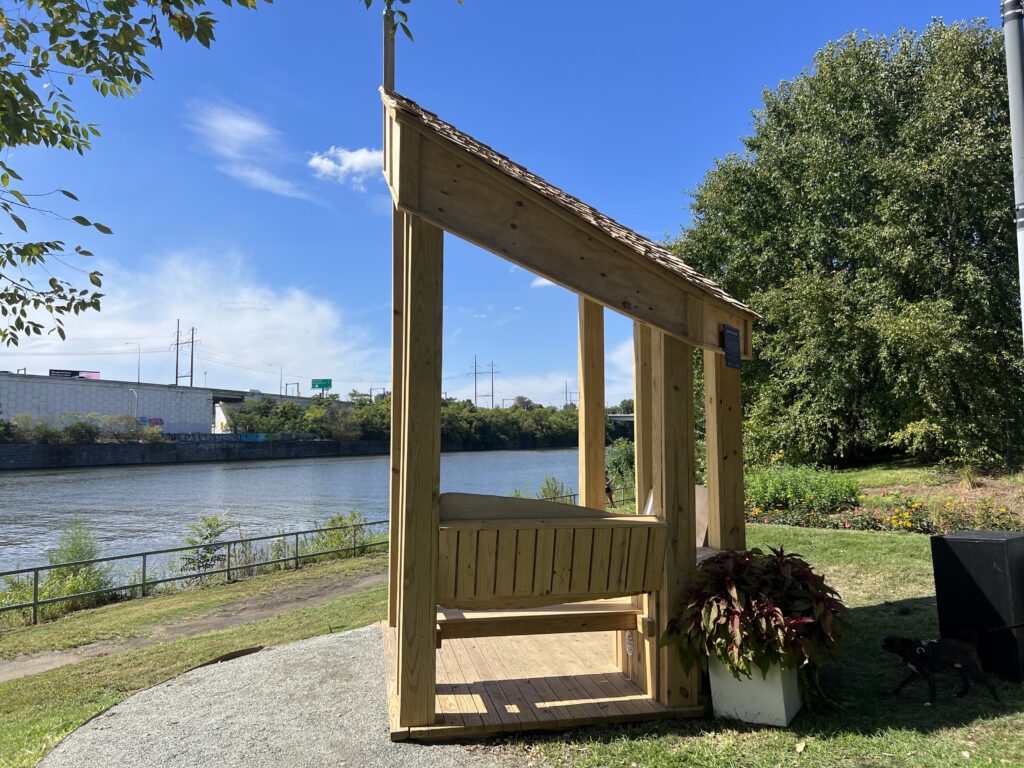
This outdoor sound installation along the Schuylkill River Trail is the culmination of the How to Get to the River exhibit. You can hear live sound from an underwater microphone placed in the river. Every 30 minutes, five minutes of recordings made underwater at the Black Rock Sanctuary near Phoenixville mix with live sound coming from the river.
How to Get to the River runs until Oct. 30.
Attunement
Attunement is a public sculpture in front of the Academy of Natural Sciences on Benjamin Franklin Parkway.
From afar, and with its funnel, cylinder and piping, it looks a bit like a contraption you’d build playing a game of “Mouse Trap.”

Attunement is a large-scale sound sculpture that incorporates a funnel, an agricultural cistern, irrigation technologies and sousaphone bells, combining them into a single three-dimensional expression of sight and sound, the academy said.
“Inspired by the traditional Japanese garden ornament and musical instrument known as suikinkitsu, Attunement depicts the energetic life of droplets of water as they gather together to create larger geophysical structures,” it said, adding: “It tells the story of how a watershed transfers water across land formations to larger gatherings of water. It then musicalizes that process so that spectators can hear and see it.”
The exhibit, which is outdoors and free, runs until Oct. 30.
The River Feeds Back
The River Feeds Back is an immersive sound installation created by artists Annea Lockwood and Liz Phillips. In the cavernous William B. Dietrich Gallery, the echoes of geese honking, a river gurgling and cheeping frogs interplay in layers of sound that envelop you. Sit on a wooden bench and it vibrates with the tempo of the sound of rushing water.

This installation was recorded at various sites along the 135 miles of the Schuylkill River from its headwaters to its mouth. The museum describes it as a layered sound map that “offers glimpses of the river system above and below the water’s surface through a variety of listening portals made of wood, slate and clay pottery.”
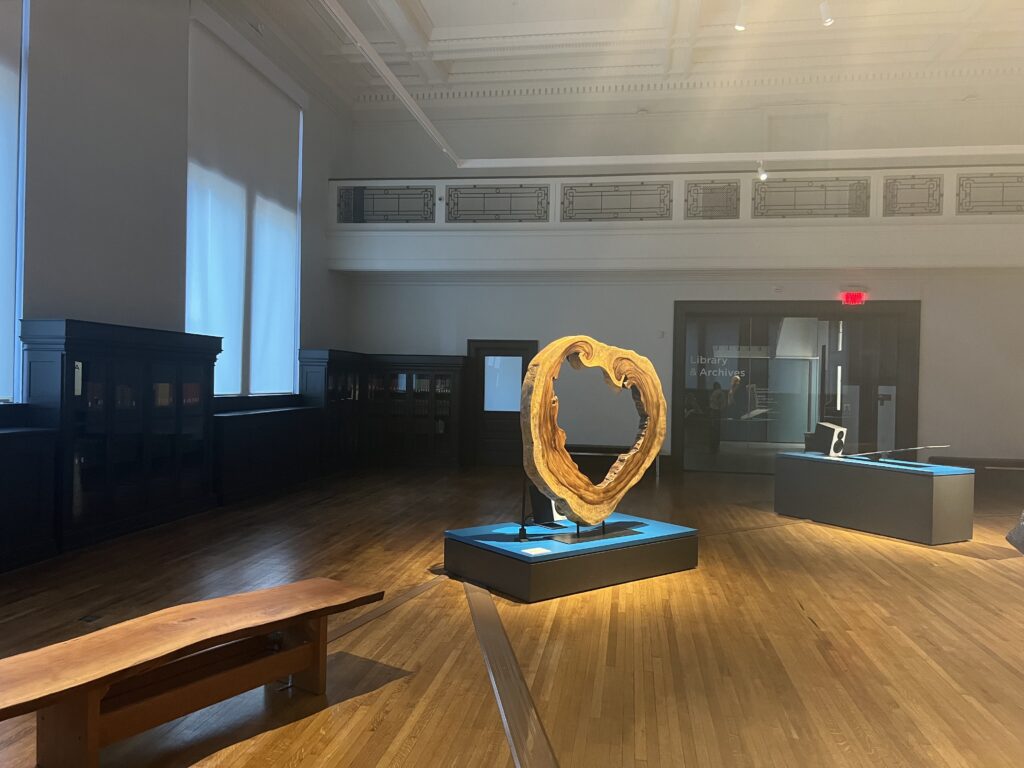
The installation is free with a general admission ticket and runs until Oct. 30.
Ocean Bound

This kid-friendly exhibit features a short video about the search for macroinvertebrate, the presence of which are a sign of a healthy river.
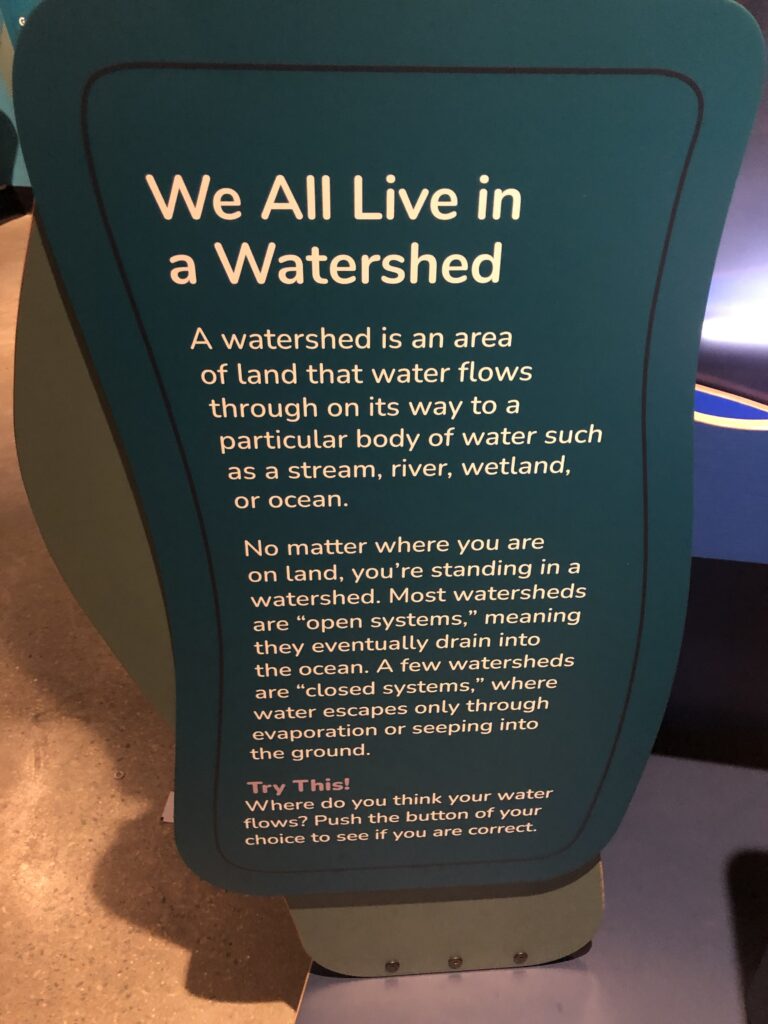
You can also learn how pollutants get into runoff, why some materials float readily downstream and play at a 3-D watershed model in which you control where it rains and discover how water flows to the ocean.
Visitors can also learn how scientists reintroduced river otters to their original habitat after they had nearly disappeared and how to save animals and birds by changing your own habits.
Ocean Bound, which is accessible with general admission, runs through Jan. 15, 2023.







